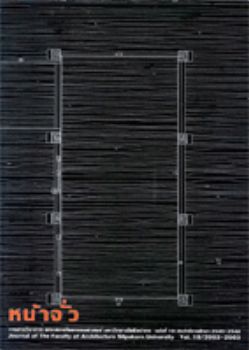From Similarities to Differences: Vernacular Houses of the Dais in Sipsongpanna and Tai-Lue in Northern Thailand
บทคัดย่อ
The Study of similarity and differentiation of the vernacular houses of the Dai in Sipsongpanna and Tai-Lue in Northern Thailand, are seeking for the answers of: the physical conditions of the village in relation to cultural ecology, the physical conditions of houses on “space” “form” and “surface” and the hidden dimensions of believes in concerning with Spatial organization. The cases study are in between, the Vernacular houses in Maung ChiangRung, Maung-Hum in Sipsongpanna and Tawangpa, Nan Province, Chiengkum, Payao Province in Northern Thailand. From macro to micro scale of study, the survey started from the village plan in relation to its cultural ecology, to houses lay out, and further to the spatial organization of houses plans in concerning with their believes. In the village context, the village plan and elements are totally similar but differentiated in the village scale, which the Dai villages are almost double size of the Tai-Lue in Thailand. In houses context, the basic space for living and spatial organization are quite similar. Those are the timber houses built on stilts, with main approach from the covered front-stairs to the covered terrace in continuing to the main hall and bedroom respectively. The kitchen can be classified into 2 types, separate kitchen in adjoining to the open terrace and combine kitchen within the main hall. It doesn’t matter with any house scale, similar spatial organizations are found. With similar house plan, there is the differentiation in house form, especially roof form. The steep hip-gable roof are quite popular in Sipsongpanna, while the Tai-Lue in Thailand played with the charming lower roof angle which were influenced from sile location and climatology. If “space” “form” and “surface” can be the mean of architectural interpretation, from this study we found similarity in “space” and “surface” but differentiated in “form” especially roof form, which mean that, there are similarity in their way of living in concerning with cultural ecology : “space” can be interpreted as “living” and “surface” referred to local building materials which were used as building envelope, but differentiated in “form” in concerning with building site and climatology. In conclusion, it can be found that, “The differentiation of house form in concerning with their site and climatology cannot interfere the cultural roots of the Tai Ethnic in any location.”





